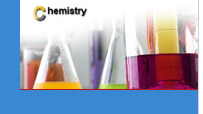当前,原油、汽油和其它例如润滑基和蜡的石油产品的价格增长,导致再次要求提高机动车的功效。
从 1974 年到 2004 年期间,炼油厂的原油消费已经增长了 28% 。同时,机动车汽油的生产增长了 51% ,因为炼油厂已经变大了、效率提高了,对汽油的需求已经超过了对其它石油产品的需求。机动车的使用数量已经增加了 95% ,可以看出机动车使用燃料的效率增长的情况。汽油的平均消费,已经从 1974 年的每年 862 加仑,增长到了 2004 年的每年 3918 加仑,一共增长了 22% 。没有计算每一辆车多跑的路程。
这期间(1980 年 -2004 年)的润滑油生产下降了 22% 到 24% ,从平均每桶原油的 1.6% 降低到 1% 。发动机变小了、排水的间隙变长了等,都被认为是润滑油不再增长的基本原因。另外,石油蜡生产量是所加工的原油的百分比,已经降低了很多,因为现在很多润滑生产商都在把润滑部分的蜡异构成润滑剂。
The current escalation of price for crude oil, gasoline and other petroleum products including lube base stocka and waxes, has generated renewed calls for increased efficiency of motor vehicles.
As indicated crude oil consumption by refineries has increased by 28 percent during 1974 to 2004. At the same time, motor vehicle gasoline production increased by 51 percent as refineries became larger and more efficient and the demand for gasoline increased more than that for other petroleum products. As an indication of the increased efficiency of motor vehicle's use of fuels, the number of motor vehicles in use increased by 95 percent. Average Consumption of gasoline increased from 862 gal/yr in 1974 to 3918 gal/yr in 2004, an overall increase of 22 percent. This does not take into account more miles driven per vehicle.
Lubricant production in this period decreased 22-24 percent and is down from an average of 1.6 percent of a barrel of crude to about 1 percent of a barrel of crude. Smaller engines, and longer intervals between drains is believed to be the principal reason for the lack of growth for lube base stocks. In addition, petroleum wax production as a percentage of amount of crude oil processed has declined significantly as a number of lube producers now convert the wax in lube fractions to lubricants by isomerization. |
